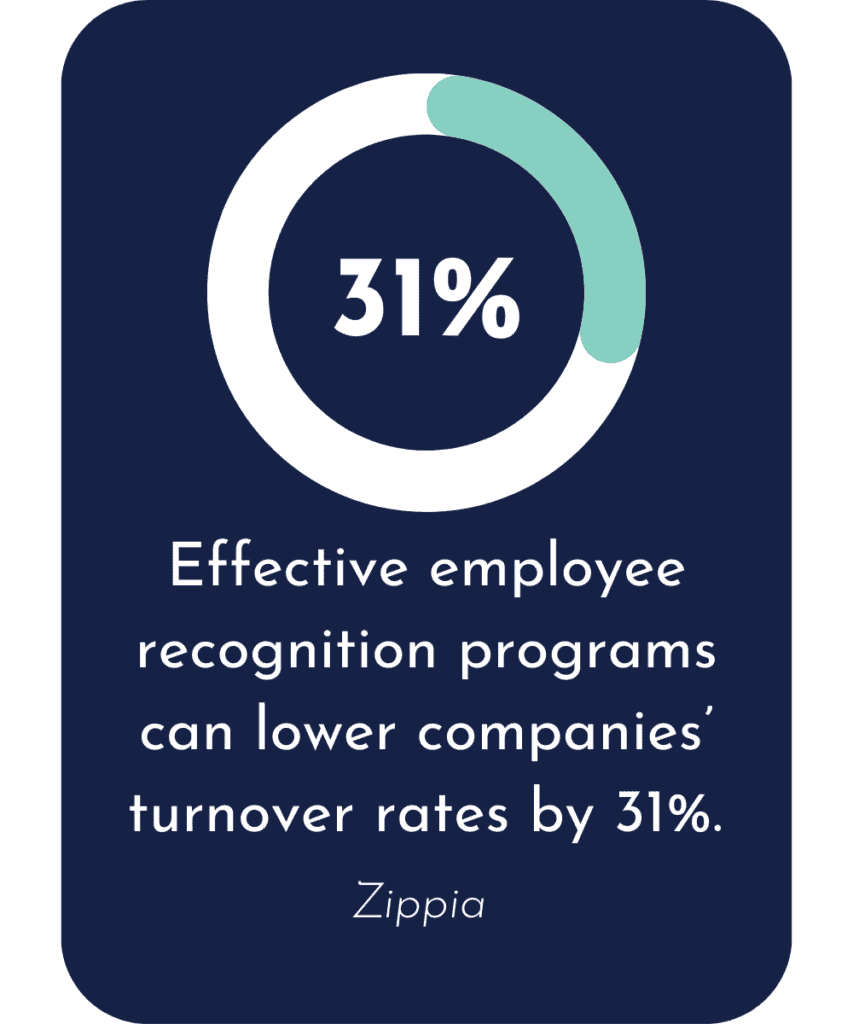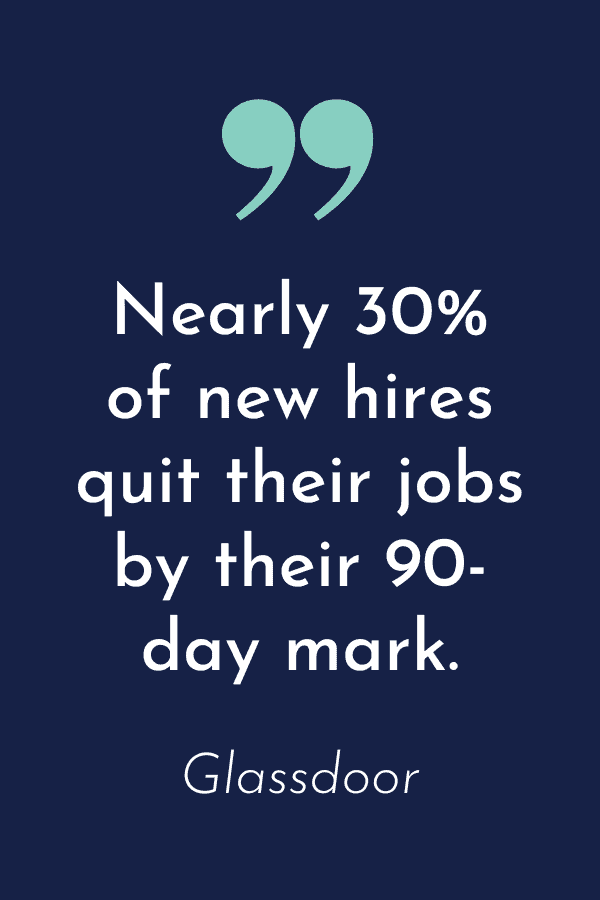It is estimated that American businesses lose around $1 trillion every year as a result of employee turnover. It is safe to say that this number has increased over the last year as a result of quick quitting – when employees voluntarily leave their jobs less than a year after starting their positions. This trend presents a massive financial burden for companies given the cost to recruit, hire, and onboard their replacements. So, how can companies avoid the seemingly inevitable trend of quick quitting?
1. Create a positive employee experience

Offering competitive compensation isn’t enough these days. Individuals want careers that align with their values, add meaning to their lives, and recognize their hard work. Interestingly, effective employee recognition programs can lower companies’ turnover rates by 31%.
From the time that employees begin working for a company, it is important for leaders to continually show them that they are valued. Showing appreciation by giving an associate kudos at a meeting, sending a “thank you” message, or providing compensation when individuals execute stellar work and contribute to the success of the organization, all drive employee satisfaction, helping organizations retain top talent over the long term.
Employees also want to feel as though their opinions and needs matter to their organizations. Therefore, companies need to establish psychological safety, seek feedback from associates, and quickly respond to the issues or requests of individuals in order to establish and maintain a culture where people are excited to work and feel comfortable contributing to the success of their teams.
2. Ensure your leaders exercise strong communication skills
Managers must be able to constantly improve their verbal and nonverbal skills to position themselves as effective leaders, and position their companies as employers of choice. This starts with establishing and maintaining psychologically safe work environments for all, through both their words and actions. Associates need to feel as though they are safe to experiment, fail, and grow. By demonstrating empathy, taking personal responsibility, and practicing authentic vulnerability, leaders can prove that they prioritize the health, happiness, and professional mobility of their employees. Further, employers who practice radical transparency, are receptive to feedback, and use systematic processes and frameworks for resolving conflicts will likely see boosted employee commitment to the mission and goals of the company. The associate satisfaction which results from exceptional leadership will help organizations keep their employees.

Supervisors who are willing to give and receive feedback are likely to produce more quickly evolving teams. But, feedback can be uncomfortable for some, and an inconsistent delivery may lead to emotional turmoil. Thankfully, clearing conversations allow employees and employers to easily and clearly communicate their feelings and intentions in a respectful and composed manner, creating receptiveness from the individuals receiving their message. When associates and their supervisors establish mutual respect and trust, they will be able to communicate honestly, leading to better collaboration which drives success. Ultimately, leaders who are willing to help their employees map out their career paths, set goals, and offer constructive feedback will undoubtedly see the continued development and long-term commitment of their people.
3. Establish a strong company brand for current and prospective employees

According to Glassdoor, nearly 30% of new hires quit their jobs by their 90-day mark. This signals a significant misalignment between employees and their organizations’ branding. The mission, vision, and values of both a company and its associates need to closely align to activate employees and maintain their long-term commitment.
Company branding doesn’t end after an individual receives a job offer, though. Organizations must invest in their employees, industries, and communities through diversity, equity, inclusion, and belonging (DEIB) initiatives, prioritization of overall wellness, corporate social responsibility-driven objectives, and fostering forward-thinking mindsets. In an ever-evolving society and competitive market, the effort that companies put into the aforementioned objectives contributes to individuals’ choice to stay after their probationary period has ended.
Therefore, if organizations work to uplift their internal teams and external connections, they will gather massive support which will inspire their employees. After all, when people are passionate about their roles and workplaces, they show up stronger and become loyal.
Coaching to Combat Quick Quitting
Employee coaching programs can support the implementation of the above tactics to prevent quick quitting. Activate 180 takes a holistic approach to coaching, focusing on career + leadership development, relationships, health + wellness, life experiences, and finances. The performance coaching program consists of personalized, one-hour video or audio coaching sessions each month and monthly experiential team workshops that spark connection and foster engagement. Activate 180 experts hand-select and match coaches with employees, ensuring strong and effective coach-client relationships by putting the person back into personal coaching, ultimately helping organizations keep their employees happy, healthy, and driven.
